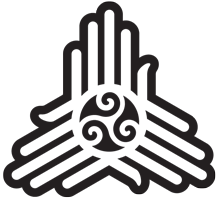Over the subsequent several years, internationalization and capitalist market-oriented policies triggered the dramatic emergence of your enormous export-oriented, large-scale manufacturing sector, which in turn catapulted Thailand in to becoming a member of the Tiger Cub Economies. Virtually all the industrial manufacturing and import-export transfer corporations institutions including the automotive manufacturing giant Siam Magnetic motors are Chinese managed. In the years between World War I and World War II, Thailand’s major exports, rice, container, rubber, and timber had been beneath Far east management.
Bangkok’s Thai China clan interactions are remarkable throughout the town as the clans happen to be major residence holders and non-profit Far east operated institutions. The Offshore management more than eighty % of consumer companies on the Thai stock market. Minor market sectors included meals vending, sodium, tobacco, interface, and fowl’s nest concessions. Major industries included shipping, grain milling, tin manufacturing, rubber, teak wood, and petroleum. Furthermore, all the residential and business terrain in Central Siam had been owned simply by Thai Chinese language.
Despite the small figures as compared to the indigenous Thai population, the China have operated nearly every single line of venture, ranging from little retail company to massive industries. Composed of merely 10 % of the occupants, ethnic Chinese language dominate above 4-fifths from the country’s important rice, tin, rubberized, and wood exports, and about the country’s whole wholesale and retail business. By the year of 1924, ethnic Oriental managed 3 of the seven sawmills in Bangkok. Marketplace gardening, sugars production (The Chinese introduced the sugar industry to Thailand), and fish exporting was dominated by the Oriental. Virtually the complete new production establishments were Chinese were able.
Despite failed Thailänder affirmative action-based insurance policies inside the Thirties to economically encourage the destitute indigenous Thai majority, 70 percent of selling outlets and eighty to ninety percent of grain mills had been controlled simply by ethnic Far east. A study of Thailand’s roughly 70 most powerful organization teams identified that every one but three had been owned by Thailänder Chinese. Even though Bangkok possesses its own Chinatown, Oriental affect is quite more pervasive and polished throughout village.
- The Chinese served as an essential impetus just for Thailand’s modern day industrialization quickly remodeling the Thai home-based economy in an export-oriented commerce dependent financial system related to global capitalism.
- In the years between Environment War I actually and World War II, Thailand’s important exports, rice, tin, rubber, and hardwood had been under Chinese administration.
- Mid-twentieth century Thailand was isolationist using its financial system mired in state-owned enterprises.
- In the next many many years, internationalization and capitalist market-oriented coverage led to the dramatic breakthrough of a large export-oriented, massive-scale manufacturing sector, which in flip catapulted Thailand into becoming a member of the Tiger Cub Economies.
Age gap is incorrect for Thai ladies
Mid-twentieth century Thailand was isolationist with its economic system mired in state-owned corporations. The Far east served since an essential impetus for Thailand’s modern industrialization rapidly transforming the Thai home economic climate into a great export-oriented trade founded financial system linked with world capitalism.

For what reason Thai ladies are they in search of partners international?
90 % of all investment strategies within the investment and commercial sector including least 65 p. c of all purchases of the banking and invest sectors is definitely controlled by ethnic Chinese. Economic thai women for american men benefits would probably additionally continue as Thai Chinese managed 80 to 85 percent from the rice mills, the largest companies within the nation. Thailand’s lack of an native Thai industrial tradition in the non-public sector is focused entirely by simply Thai Chinese themselves. Of this 25 leading entrepreneurs in the Thai organization sector, 23 are cultural Chinese or of partially Chinese descent.
 KUFFLET
KUFFLET